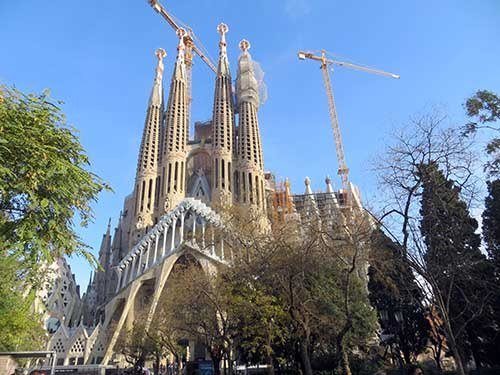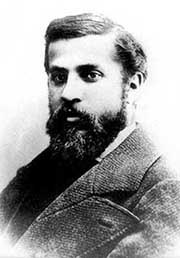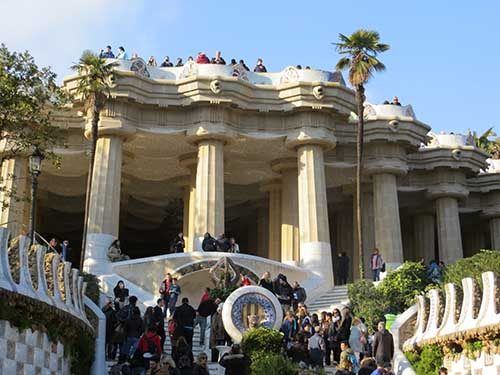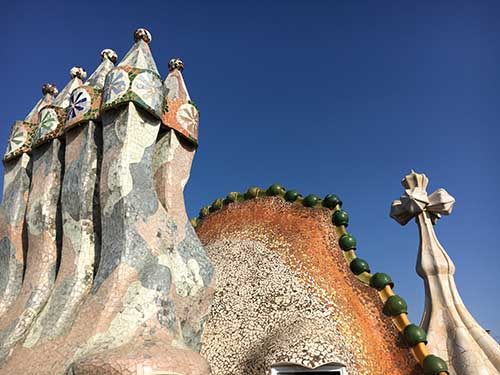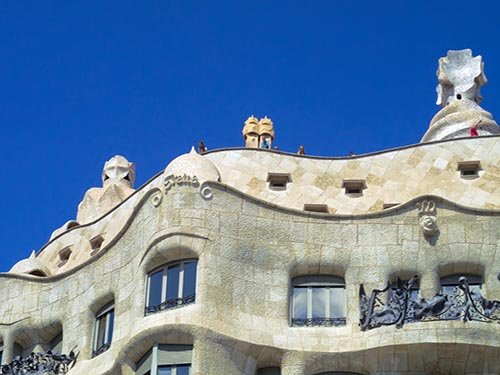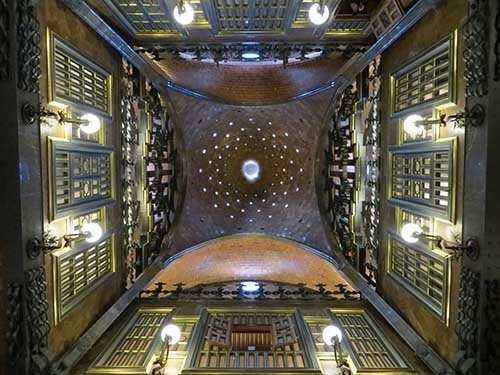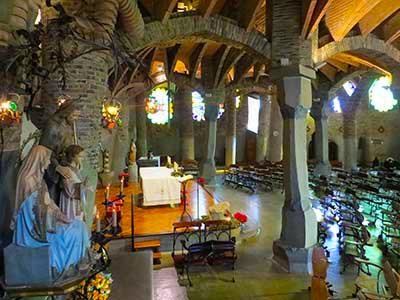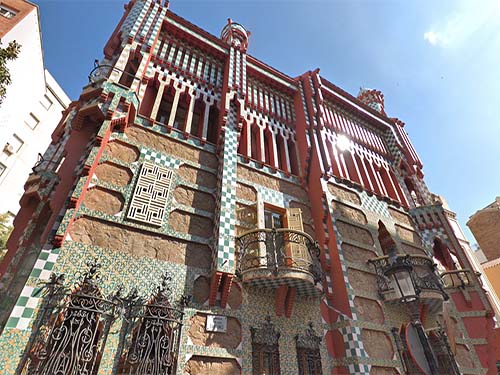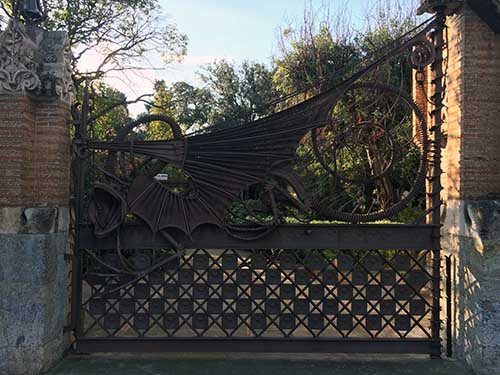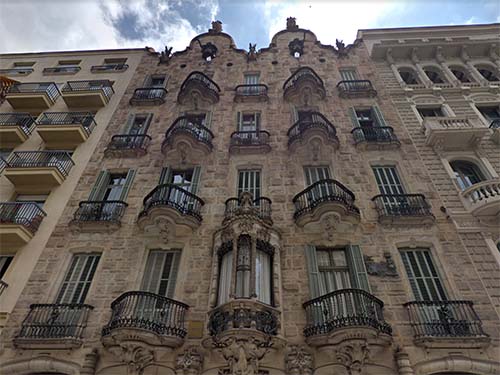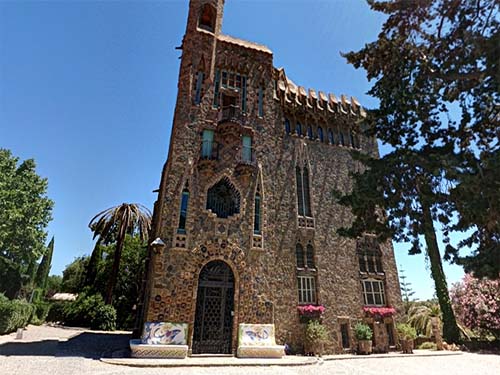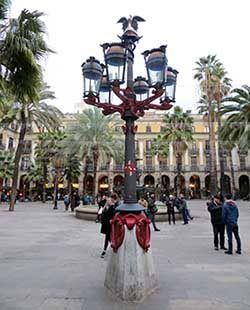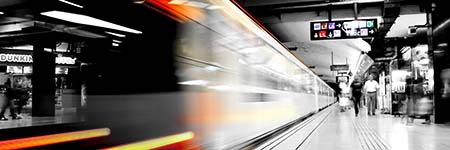When you hear Barcelona, you immediately think of Antoni Gaudí. Antoni Gaudí i Cornet (1852 - 1926) was an architect whose work was part of Catalan modernism (known abroad as Art Nouveau or Jugendstil). Born in Reus as the son of a copper smith, he went to Barcelona to study architecture. Antoni Gaudí died on 7 June 1926 at the age of 73 after being struck by a tram. He was buried in the Sagrada Familia.
![Sagrada Familia Sagrada Familia Gaudi]()
(1882 - 2026?) The absolute highlight of Barcelona and Spain is the unfinished church of the Holy Family, or the Sagrada Família. This masterpiece designed by Antoni Gaudí has to be part of your city break in Barcelona. Please be sure to buy your tickets in advance, as the Sagrada Familia is usually sold out for the following day.
![Antoni Gaudi Park Guell Park Guell]()
(1900 - 1914) The popular Park Güell with its salamander and the mosaic benches was commissioned by Eusebi Güell. Intended as a luxury residential park, only a few houses were sold, including Antoni Gaudi's own home that is now Casa Museu Gaudi. In order to visit the park, it's necessary to buy tickets in advance.
![Gaudi's House Casa Batllo Gaudi's House Casa Batllo]()
(1904 - 1906) Josep Battló i Casanovas commissioned Gaudi to build an apartment complex on the Passeig de Gràcia. Nothing in the building is angular; it's all flowing lines. The roof full of mosaics represents the back of a dragon. One of Antoni Gaudi's most beautiful UNESCO buildings to visit.
![Casa Mila La Pedrera Casa Mila]()
(1906 - 1910) This apartment complex on the Passeig de Gràcia is one of Antoni Gaudi's most famous buildings and is on the UNESCO list. Because of its appearance without any straight lines, the building is also referred to as 'La Pedrera', or the stone quarry. It's roof terrace is a particularly popular photo spot.
![antoni gaudi buildings antoni gaudi buildings]()
(1886 - 1890) Near the Ramblas, Eusebi Güell had a large and dark residential palace built for his family. The decorations are certainly very special. The roof (pictured) has spectacular lighting and the roof terrace is characterised by the mosaic chimneys. This UNESCO building is certainly worth a visit and not as crowded as the other Gaudí works.
![Crypt of Gaudi Gaudi's crypte]()
(1908 - 1914) 23 kilometres from Barcelona, Eusebi Güell had Colonia Güell built; a community for the workers of his textile factory there. He commissioned Antoni Gaudí to design a church there. Because of a lack of funding, the church was unfortunately never completed and construction stopped after Gaudi's crypt, which is certainly worth a visit.
![Casa Vicens Barcelona Casa Vicens Barcelona]()
Houses: Casa Vicens
(1883 - 1889) Casa Vicens was Gaudi's first important design and is also on the UNESCO World Heritage List. The colourful building is located in the Gràcia district and was built by tile manufacturer Manuel Vicens i Montaner. The building is a mix of Spanish and mudejar style and clad with ceramic tiles. Casa Vicens recently opened to visitors. Daily opened 10am - 10pm.
![gaudi buildings gaudi buildings]()
Finca Güell
(1884 - 1887) Originally, Finca Güell was the luxury holiday home of the Güell family on a large plot just outside Barcelona (on Av. de Pedralbes 7). Gaudi designed the stables, the two watchmen houses, and the cast-iron entrance gate with the mythical dragon. Very little is left of the estate, but the entrance, and a small part of the old garden can still be visited. Admittance is 5 €, and it is open daily from 10:00 - 16:00. Many tourists find a visit to Finca Güell underwhelming.
![antoni gaudí structures antoni gaudí structures]()
Casa Calvet
(1898 - 1900) Casa Calvet is located in the quarter of Eixample (Carrer de Casp) and was built by textile magnate Andreu Calvet, who used it as a residence and commercial building. It is one of the less striking buildings by Antoni Gaudi in Barcelona and noticeably deviates from Gaudi's typical architectural style (more symmetry and repetition). Casa Calvet is now home to a very fine restaurant and cannot be viewed without a trip to the restaurant.
![gaudi architecture barcelona gaudi architecture barcelona]()
La Torre Bellesguard
(1900-1909) At the base of the Tibidabo mountain is the mansion 'Torre Bellesguard', also called Casa Figueras. The residence has a Gothic Catalan style with modernist elements and used to offer a beautiful view ('Bell esguard') of the city. This natural stone building with its castle-like appearance can be visited for €9 with an audio guide. Official website.
